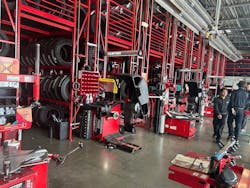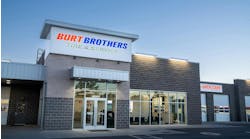Welcome to your happy place! Whether it’s a hammock on a quiet beach with a gentle breeze, the edge of a ledge in the mountains, or a comfy fireside chair with a good book and a cup of tea — no matter where you define your happy place, you likely connect with it as refreshing, warm, pleasant, agreeable, secure, cozy, enjoyable and safe. In a word, comfortable.
Other than safety and security, comfort has long been identified as a primary human need. As a building block it’s more foundational to our needs than love, friendship, belonging, respect, strength, self-actualization and even freedom. It’s no wonder most of our daily decisions, conscious or not, are rooted in our need for comfort.
On the flip side of safety, security and comfort, we find fear. Most consider fear a negative emotion. Its scary head is rooted in the unknown, uneasiness, panic, agitation, annoyance and dread. We associate fear with risk, sometimes in paralyzing doses. So we go great lengths to avoid it.
Let’s say your labor rate is $145 an hour. In the past three years, like most, you’ve seen your payroll percentage of gross profit increase and outpace your gross profit dollar percentage increase. You know your service is worth more and you need to pay your techs more in order to stay competitive in the labor market. You’ve done your homework by calling your “competition” and you find out you’re near or at the top of the range in your market. You think about it for a bit, maybe discuss it with your team, and somehow the day comes and goes without making a change. You’re likely a bit worried that bumping your billable labor rate to $155 or $165 (likely still too low in most parts of the country) could be a mistake. Why? You’re afraid.
The thought of making a bad decision makes your heart race. It seems like a big move. What if someone complains? You’re uncomfortable. You’d rather avoid the annoyance of any potential pushback than reap the benefits you’d afford by getting paid fairly for the quality of your work. You leave it alone and move on. Welcome back to your happy place; that was a close one!
It's a new day and business is good, but one of your techs shows up late, again. You’re backed up before you even get a chance to get ahead. This isn’t the first time. This has been an ongoing issue, especially on Fridays. You think to yourself, confronting the situation could slow us down even more. And what if the technician gets upset by the conversation and leaves? What then? Find a new tech, yeah right, that’s not so easy these days. You’re so jammed up that you rationalize the damaging behavior instead of thinking through the emotional decision you’re making. Somehow you creatively avoid the hard discussion, yet again. By midday you get caught up and somehow all the stress created earlier in the day has dissipated. You put this one on the shelf too. Welcome back to your happy place; another near miss!
I see this sort of behavior in every meeting or training I facilitate. The labor rate example, or some other pricing question, is the most common. Personnel management, or lack thereof, is next in line. Fear of the unknown overrides our ability to see our way through the risk of any potential reward. We keep comfy in lieu of making the harder decision, just as we always have. We may not realize it, but we often delay making decisions to avoid stepping out of our comfort zone.
I want to reinforce the idea that “the only true risk is the risk not taken.” Why? Because I see fear everywhere in my interactions with owners and their teams. It is hands down the single biggest barrier to elevating performance.
I encourage you to bet on yourself. Trust that you can and will fix whatever might need fixing after the fact. And remember that emotions shape the outcomes of our decisions much more than strategy ever will. The way you frame your future in your own mind is key to taking risks and getting ahead. Turn fear from a paralyzing agent into an adrenaline boost. Be bold; be different; be daring; take chances — and I guarantee you’ll find new levels of happy you never knew existed.
If you’d like to fast track this process, find the support of a proper network. Like raising labor rates, connecting with a peer group is always a decision people say they wish they would have made sooner.




